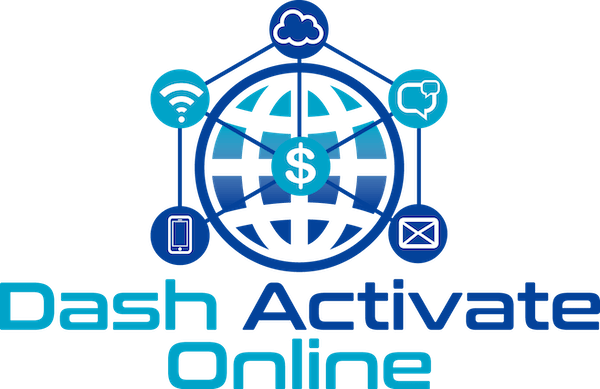Setting Up The Budget
Setting up an ad budget can be a real pain in the butt. Calculating how much should you spend per ad, how much per day, per week. Taking in account all those parameters can give you a serious headache. Especially nowadays when you have so many different platforms to choose from. Luckily, some platforms offer in-depth and easy-to-understand ad management systems. Facebook is definitely on top of the game in this field.
Facebook extends it’s helping hand when it comes to ad management because that’s how they get paid. But how can you use their system to its fullest potential? Which tips and tricks should you use?
Well, let us find out together.
- Set a Target Revenue Goal
Setting a revenue goal for your marketing campaign might seem like a simple step which you should do first. But you would be surprised how many smaller companies fly blind with this critical decision. Usually, they just do a one month test based on what they can afford to spend, to see how their ad will fair on Facebook and adjust based on the results. This strategy can work of course, but it will not provide you with the most ideal strategy to base your future decisions off. Also, you may see good engagement with your potential customers, but good ad engagement does not correlate to positive revenue turnaround from that specific ad.
A better way to approach this problem is by creating a revenue goal for the month.
Rather than waiting to see how things go, you should try answering the question –
“What budget do we need to generate $X in revenue with Facebook ads?”
To answer this loaded question, you do need to understand some of your fundamental numbers which should be step one in any marketing plan (and why we have an incredibly in depth on boarding process for our clients to help determine these metrics).
Let’s say for example you run a Dropshipping store (like a number of our partners) and you want to generate $5,000 profit this month before ad costs. If the margin on your products averages at 40%, then you need $12,500 in sales to hit your goal.
Let’s also assume that your average order value (AOV) is sitting around $85. You now know you need to drive 147 conversions to hit your numbers.
This is where it’s useful to have an established CPA to benchmark your campaign against. Generally speaking (and this varies client to client, product to product) but let’s assume an average CPA of $19.
That means you now know that to hit your goals, you need an ad budget of $2,793 to generate $12,500 in sales.
This method works the same for lead gen and can be calculated knowing your CPL (cost per lead) and closing rate on leads to work backwards to an ad budget.
With these tactics, you learn how much you have to invest in your ad campaign to earn X amount of money.
2. Use a Custom Conversion Path In Ads Manager
Now that you know how to set up your target revenue goal, we will talk about how you should use Facebook Ads Manager to its fullest potential. This is our speciality at Dash Activate Online, so if this seems daunting don’t hesitate to reach out as we’re always more than happy to help!
The first step that you need to take is to install and configure the Facebook pixel. This is an amazing tool which will help you to keep track of your conversions. It will also provide you with a transparent ROI and ROAS. Once you’ve installed the pixel, you will have to create a custom conversion.
Let’s say that you want to set up a custom conversion to measure how many times your lead magnet was downloaded. For this, you should Open Facebook Ads Manager and select Custom Conversions.
Next, you click on Create Custom Conversion in the pop-up window. Then enter the URL of your thank-you page, then select Lead as the category, then click Next. After that enter the name of your conversion and click Create. Congratulations! You are done.
Every time someone views the thank-you page Facebook will record a lead.
After you created your Facebook ad, choose the Conversion as your main objective and then select custom conversion as the conversion event.
After all those steps everything is set up and ready to go.
3. Create a Great Two-Part Ad Campaign
When you are calculating a cost per lead – your audience, ad creative, and funnel strategy can have a major impact on the end results.
Through our testing, we’d recommend against sending cold traffic directly to a download, signup or purchase page as the bulk of conversions rarely come from cold audiences. What you should do is use your content to ease your audience into submitting their email address to you without pushing them forcefully to do so.
There are two steps you could take:
• Send cold potential customers to your high-quality blog post.
• Retarget blog readers with your lead magnet.
This steps will allow you to target both groups with different content which promotes the same product.
4. Always Monitor Your Results and Adjust Your Ad Campaign
After your ad campaign has been up for a while, look up the gathered conversion data. For this, go to the Ads Manager and look up your costs. This step will allow you to see all the relevant data connected to your ad campaign.
To see it, you would have to configure your columns which would show you a custom conversion. To do this, you should click on the Columns button and select Customize Columns. Then you should select all the checkboxes on columns that you want to add.
After you are finished with the selection, select Save as Preset and click Apply. If you added the lead magnet download and cost per lead, then you can see how many leads you have generated and how much it cost you to get a lead which you can then compare back to your benchmarks for guidance on optimisation.
This will allow you to know exactly it costs you per single lead (or purchase conversion) and subsequently, how much money should you put in your Facebook ads budget!
Conclusion
With these tips, you will know exactly how much should you spend on Facebook ads. How should you set them up, how to monitor your results, conversions, leads etc.
Facebook has provided you with all of these tools. It would be a waste if you didn’t use them to their fullest potential. So make the smart choices, definitely don’t fly blind on your ad budget and allow the Facebook ad tools to work your advantage.
For more useful tips, social media news and insights stay tuned to our blog! Don’t forget, we also offer FREE strategy sessions to help you get the jump on your competitors.
Book your call HERE now!





